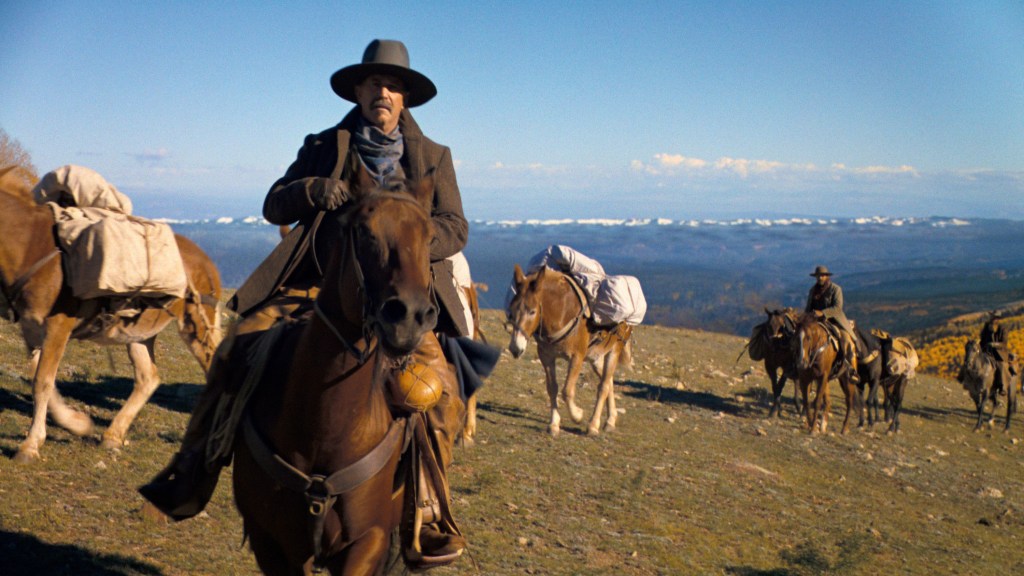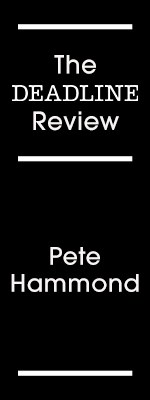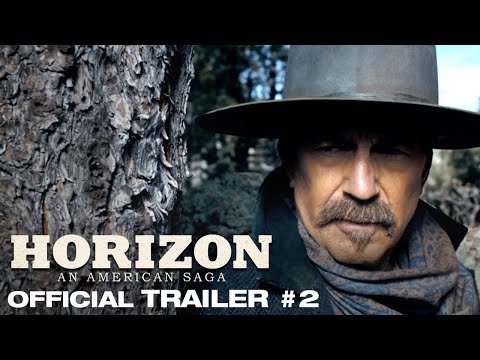
Warner Bros.

There’s no doubt that if there’s one person determined and determined to continue the long history of Hollywood westerns, it’s Kevin Costner. Okay, well Clint Eastwood too. And that’s been true since the start of his career, when he played the freewheeling scene-stealer Jake in Lawrence Kasdan’s film. Silverado in 1985, and he also made an impression as the title star of the 1994 film Wyatt Earp. But his real mark in the genre is not only as an actor, but also as a behind-the-scenes director and producer, first with his Oscar-winning Best Picture in 1990. Dance with wolves and 2003 is awesome Open range with co-star Robert Duvall. In recent seasons, he has been heavily involved in a more contemporary version of his hit television series, Yellowstone. But undoubtedly his most ambitious and sprawling swing to date, Horizon: An American saga, which debuted Sunday evening at the Cannes Film Festival as a world premiere out of competition, constitutes the apogee of this star’s love affair with the West and its evolution.
Lasting three hours, this film, scheduled for release by New Line and Warner Bros on June 28, is only “Chapter 1”, the first in an unusual series of four separate films (no sequels) continuing the massive story, with Chapter 2 already in the can and scheduled for release on August 16, and Chapter 3 would be brought before the cameras shortly. Of course, this multi-part saga is not unusual on television, where it thrives as limited series, but in cinema it is virtually unknown – not to mention the fact that its star/director, who dreamed it up under various forms since 1988, largely foots the bill.
RELATED: Photos from the Cannes Film Festival Premiere of ‘Horizon: An American Saga’: Kevin Costner, Sienna Miller, Luke Wilson and More
Is he picking at windmills here? Are today’s film audiences, post-pandemic, ready to sign up and stay? Time will tell, but this first chapter is exactly what you’d expect from Costner, who delivered a film in the tradition of the genre where greats like John Ford and Howard Hawks once rode with founding classics that endure but in which new attempts are rare. In fact, I just saw a stunning 70mm 4K restoration of the 1956 classic that Ford copied endlessly. Researchers, a film whose influence is visible even in the upcoming post-apocalyptic saga Mad Max from Warner Bros, Angry.
RELATED: ‘Furiosa: A Mad Max Saga’ Review: Chris Hemsworth and Anya Taylor-Joy Take the Dystopian Franchise to New Levels
But nothing on this scale has ever been attempted for this type of big screen release model, and I would argue that, at least based on the first part with its huge cast of characters and storylines woven in and out , Costner’s biggest influence might actually have been the 1963 Cinerama production of How the West was conquered. I know from several interviews in the past, including my own, that Costner has always noted the impact of seeing this film (nominated for Best Picture and winner of three Academy Awards, including Best Original Screenplay) with his father marked him all his life. Likewise, it spanned many years, characters, and story arcs like Horizon but it was just one long, reserved-seat cinema event. Horizon has at least four times his mind.
RELATED: Kevin Costner, Sienna Miller, Luke Wilson and Cast Talk Horizon: “We Can’t Just Make Our Money Pile Bigger Than Our Heart is Full” – Cannes Studio
Spanning approximately 15 years after the end of the Civil War (a factor but not the focus here), Horizon is about the expansion and settlement of the American West, about those brave white people who marched toward the promise of a new life aboard horse and wagon trains. Literally. In the film Horizon is the name of an essentially suburban dream. We continually see flyers urging people to come west. “If you want a farm or a house, the best thing in the West is the town of Horizon. The best grazing lands in the world, the richest lands, prime virgin lands with pure and abundant water, a temperate climate and excellent health,” he announced to potential settlers.
What it doesn’t say is that it’s also the homeland of the American Indians, of our Native Americans, many of whom are understandably not very enthusiastic about this development, given what they see as their territory, and that could also be a dangerous proposition. But this is a film about Manifest Destiny, and therein will lie many of the complications for these (many) people we meet along the way. And of course, in different parts of the world, this concept makes this film still relevant, even if it is told as a piece of our history.
It is clear from this chapter 1 that Costner, who co-wrote the screenplay with Jon Baird and a story by Mark Kasdan, is once again interested in this conundrum with the indigenous population, just as he was in Dance with wolves embarking on a much more in-depth and complex study than Hollywood has done for decades in its treatment of American Indians in cinema. And following another film premiered at Cannes last year, that of Martin Scorsese Killers of the Flower Moon, it will be interesting to see how this all plays out in future chapters. In it, the table is set and we meet many of the key players, with the focus on those white settlers who headed west as the Civil War had ravaged the Union, but with the promise of a change in times that gives hope.
Chief among the settlers is Costner’s character, Hayes Ellison, a lone wolf who would like to be left alone but keeps getting drawn into things he would rather avoid. He has survival and combat skills that will come in handy, especially during some confrontations with some very bad guys who cause trouble, notably the outlaw Sykes family.
Refreshingly, Horizon includes a large number of meaty roles for women, this is generally not the case in this type of film. But there are many here, led by the fierce pioneer Frances Kittredge who, not so willingly, came to the colony with her husband. Sienna Miller plays her strong and she promises to be a key player in the future. Jena Malone’s Ellen is also a highlight, a feisty, badass woman who will unfortunately find herself in dangerous situations. Abbey Lee’s Marigold, who ships with Ellen and her well-meaning husband Walt (Michael Angarano), is another strong female role here, as are those played by Ella Hunt as a British settler coming west with her husband, and Isabelle Fuhrman as Diamond, who, along with her sisters, heads west and undoubtedly has the potential for a sweetened story down the road.
It’s a huge cast, but Costner tries to introduce them all here, including Sam Worthington’s intriguing character of First Lt. Trent Gephardt, a soldier stationed at Fort Gallant but a guy who has questions about himself- even and about where he is going in this new world. . Danny Huston’s friendly Colonel Houghton has his hands full with the waves of emerging settlers, but knows there will be no way to stop them, or possibly protect them when they arrive at Horizon. And you can count on Michael Rooker’s Sgt Major Riordan, who has the same concerns in Gallant.
Others include Luke Wilson, the good but reluctant leader of a wagon train, chosen against his will but trying to rise to the challenge, and Will Patton, a widower still recovering from the Civil War and accompanying his three girls for a better chance in life.
The Native Americans are portrayed authentically, as one would expect in any of the filmmaker’s films. Dances with Wolves. Among the most notable are Owen Crow Shoe as Pionsenay, an Apache warrior confused and frustrated by the clashes with the settlers and unhappy with this development, as opposed to his brother Taklishim (a good Tatanka Means) who sides with from their father, the leader, while trying to be non-confrontational. Liluye (an excellent leader Wase Winyan) is also his wife and the mother of their baby, but she seems to have more courage and actually thinks that they, like her brother-in-law, should resist the rise of the settlers rather than stand idly by. by.
Giovanni Ribisi, Glynn Turman, Tom Payne, Kathleen Quinlan, Angus MacFayden and countless others also appear, some perhaps given more to do in later chapters. There are more than 170 speaking roles in the series which is filmed on locations across Utah, with stunning cinematography by J. Michael Muro that stylishly captures the grandeur of the Wild West. Further thanks go to Derek R. Hill’s authentic production design and John Debney’s soulful score.
For Costner, this is an impressive start, with the promise of more to come. It even ends with a montage of scenes from the second movie coming out in August, much like you might see if this were a TV production, which is a challenge. not. With Horizon: An American saga, Costner is simply trying to keep the American western alive, but he could, with this innovative roll of the dice, also try to keep the theaters alive at the same time, provided there is still an appetite for westerns. Let’s hope that’s the case.
Title: Horizon: an American saga
Distributer: Warner Bros.
Festival: Cannes (Out of Competition)
Release date: June 28, 2024
Director: Kevin Costner
Screenwriters: Kevin Costner, Jon Baird
Cast: Kevin Costner, Sienna Miller, Sam Worthington, Jena Malone, Danny Huston, Luke Wilson, Michael Rooker, Will Patton, Owen Crow Shoe, Tatanka Means, Wase Winyan Chief, Jamie Campbell Bower, Isabelle Fuhrman, Jon Beavers
Rating: A.
Operating time: 3 hrs 1 min
